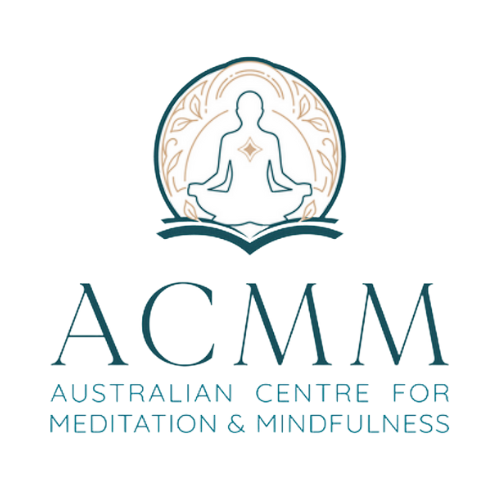. Introducing our NEW elective, Supporting Anxiety and Trauma with Presence. This article provides some insight into this new learning journey that forms part of our Meditation Teacher Training options. It touches on the origins of anxiety & trauma and how the body and mind respond to fear. It also highlights the importance of becoming trauma aware meditation and mindfulness facilitators. So that we can help our clients transform their relationship to fear.
The origins of fear
The experience of fear (thoughts, feelings and sensations in the body) is a natural part of being human. It is a shared survival instinct common to humans and animals. Fear is an instinctual survival response to realistically anticipated danger and has evolved out of necessity. For example, if a threatening animal confronted us, the experience of fear would enable us to respond in a way that would maximize our capacity to survive. When we experience fear, a range of automatic and inter-connected physiological and behavioural changes is activated. This serves to protect us from known and immediate danger.
This means that these automatic, quick and responsive changes would prepare and enable us to either run to safety or have the energy to stay and defend ourselves. (Fight or flight). As well as physical threats, humans are also sensitive to potential social threats. We have an innate dependency on other humans for safety and security. Acceptance by the group (family, society or community) is also part of our innate survival mechanism.
What is the difference between fear and anxiety?
In contrast to fear, anxiety is a repeated or ongoing experience directed towards thinking about and imagining a potential future threat. Anxiety anticipates a fearful experience. Fear, which is immediate and instinctual, is usually accompanied by an automatic reaction rather than thinking. Unlike fear, anxiety may or may not be focused on a specific situation, activity or context. Anyone at any age or stage of life can experience anxiety for brief or long periods.
In a dangerous situation, we might experience fear as an immediate and strong sensory experience . One that gradually decreases when we feel safe. In contrast, anxiety can leave us continually on alert and scanning for signs of potential danger.
Both fear and anxiety can be useful in certain situations for short amounts of time. This includes circumstances related to survival, self-preservation, performance and/or when considering, planning and preparing for potential threats would support us to face a challenging situation e.g. bushfire/disaster plan readiness. The parts of our brain that enable us to imagine, problem-solve, analyse, evaluate, reflect on the past and plan for the future also have the potential to activate ongoing anxiety. Human brains easily and vividly imagine potential threats, future disasters, all kinds of feared outcomes as well as the ability to go back and revisit past fearful experiences.
Imagining and remembering can activate a range of sensory experience (thoughts, feeling and bodily sensations) and associated behaviours aimed at distraction or escape. Although imagining and remembering are valuable and useful characteristics, as it relates to anxiety, these capacities complicate the fear response activated by our biological survival system.
Supporting Anxiety and Trauma with Presence
This introductory elective aims to support people in bringing an embodied sense of safety, stability, and compassionate awareness to thoughts, feelings, sensations, and behaviours associated with anxiety. Through background information and experiential practices, students will be supported to cultivate and practice the skills of noticing and allowing the experience of fear to be here and met with an open, accepting and compassionate attention. This includes learning to notice thoughts/beliefs, feelings, sensations in the body and consequent behaviours that emerge from the avoidance of and aversion to the experience of fear.
The Supporting Anxiety and Trauma with Presence elective aims to deepen students’ understanding of the experience of anxiety from a variety of perspectives as well as explore the role of ‘aware presence’ through meditation and mindfulness practices relevant to supporting the people we work within our role of meditation guide, teacher and/or facilitator.
This approach develops and strengthens our capacity to:
- Notice when our attention has been pulled away from the present moment towards/in anticipation of a fearful future event or replaying past events and gently returning it to presence.
- Expand our awareness to include our sensory experience of fear with a curious, compassionate and accepting attention rather than judgement and avoidance.
- Engage and participate in life in a way that is personally meaningful and fulfilling to us (living aligned with our values).
Working towards a new relationship with fear
On this learning journey, we encourage you to gently and gradually open to the possibility of relating differently to fear rather than attempting to get rid of it. This learning approach supports students in building skills to access, develop and strengthen inner resources. This assists in generating a little more freedom, space, choice, compassion and connection with the wholeness and completeness of who we are.
For some people, anxiety is rooted in trauma. So, we have also included some basic practical background knowledge and tips on how to guide and teach meditation and mindfulness in a way that best supports people with a history of trauma. A wide and inclusive definition of trauma is “any experience that is stressful enough to leave us feeling helpless, frightened, overwhelmed, or profoundly unsafe “[1] It is related more to the impact of an event or series of events than the content. It can arise from single or repeated adverse events. These events are outside of our control, threaten to overwhelm our ability to cope and leave us feeling powerless.
[1] Ogden,P. Sensorimotor Psychotherapy. (2015), p.66
Becoming trauma aware
Not everyone who experiences a traumatic event will develop a form of ongoing post-traumatic stress. Many factors contribute to the recovery process after trauma. This includes, but are not limited to a person’s previous lived experience and biology. It is also influenced by the level of support and resources they were able to access at the time.
Trauma-sensitive meditation and mindfulness guiding and/or teaching promotes psychological and emotional safety. By becoming more trauma aware, we decrease the likelihood of inadvertently causing re-traumatization. This helps in effectively supporting people in one aspect of their trauma healing journey.
We look forward to supporting current and future meditation guides, facilitators and teachers on this learning journey. This elective deepens our understanding of anxiety and trauma. It instructs us on how we can draw on meditation and mindfulness practices in ways that support a sense of safety and stability in the bodies, minds and hearts of those we work with.
More about Supporting Anxiety and Trauma with Presence
This elective introduces a range of practices from mindfulness and meditative traditions that support awareness and connection with compassionate presence. It also forms part of the Mental Health and Wellbeing Specialist Stream. It has been authored by ACMM coach Morgan Jai-Morincome, with contributions from ACMM coach Tim James. Morgan is a Meditation Guide & Coach and qualified Holistic Counsellor & Psychotherapist. She also has a background in education, expressive arts and community development. Raised amongst a yoga community, Morgan was immersed in a variety of meditation approaches. She continues her learning across different wisdom traditions. She runs Sacred Inner Wild , offering 1:1 sessions in person and online and meditation circles. Her professional and personal experience creates a safe, compassionate, creative and sacred space for her clients and students.
We provide a range of post graduate training options and support. Certificate, Diploma and Masters courses in Meditation and Mindfulness Teaching. An optional addition to any course is our Community Work Placement Program. It supports new meditation teachers to begin or expand their teaching practice. Download a prospectus for all the details or book a discovery call with us here to find out more!







